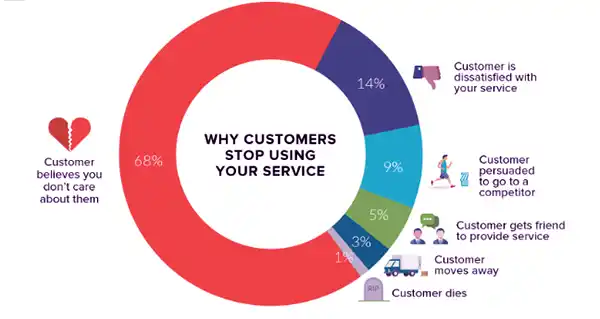How Does Service Order Field Activities Work?
Key Takeaways
- Behind the delivery service at your door, lies a sequence of events that ensures a positive customer experience.
- The first step is when the customer files a work order, along with all the information.
- Other steps include allocation, customer engagement, detecting problems, etc.
- Well-organized planning and execution ensure smooth service delivery.
In the realm of service delivery, the process of handling service or work order field activities is akin to orchestrating a well-choreographed dance. Behind the scenes, a fascinating sequence of events unfolds, ensuring that customer issues are addressed promptly and efficiently.
So in this article, you can read about the intricacies of how these service order field activities work, providing insights into the seamless mechanisms that empower them to shine as everyday heroes for their clients.

Initiating the Process
The journey begins when a customer seeks assistance with a particular issue or requirement. They submit their work orders through various channels like customer care hotlines, online portals, or mobile apps, providing crucial information about their needs.
Work order includes all the details regarding maintenance tasks and the outlines like who the work is assigned to, any special instructions, or anticipated end results. This step is very pertinent as this sets the base. This initial step sets the stage for what lies ahead and ignites the gears of the service delivery process.
The work order management market is estimated to reach a CAGR of 7.9% by the next five years.

Routing and Allocation
Once the work order is received, a sophisticated system kicks into action. This system skillfully routes and allocates the request to the most suitable technician or field expert.
The goal is to match the mechanic’s expertise, location, and availability with the specific requirements. Like puzzle pieces falling into place, this process ensures that the right person is dispatched to the right place at the right time.
One mistake in this step can result in dire consequences. Think about what impression this makes on the customers when the engineer is not able to do his work in the way it is supposed to be.
Equipping the Field Technician
Preparedness is key to successful field activities. Before setting off on their assignment, on-ground technicians are armed with the necessary tools, equipment, and information to handle the designated task.
There is no harm in hoping for the best as long as you are prepared for the worst. Even if it’s a comprehensive toolkit, specialized diagnostic devices, or access to relevant customer data, they are well-equipped to tackle any challenge that comes their way.
The Customer Engagement

In the realm of work order field activities, customer engagement is the heart of the matter. As the on-ground technician arrives at the client’s location, they embark on building a relationship of trust and understanding.
Active listening, effective communication, and empathy become their guiding principles. Successful operators don’t just address technical issues; they also excel in interpersonal skills, making the customer feel valued and at ease.
Problem Diagnosis and Resolution
Now comes the moment of truth – diagnosing the root cause of the issue and implementing the solution. Armed with their technical expertise and diagnostic tools, they carefully assess the situation.
The objective is not merely to apply a quick fix, but to analyze and resolve the underlying problem comprehensively. A meticulous approach ensures that the issue doesn’t resurface and that the client receives a lasting solution.
Capturing Service Data
Each field activity leaves valuable insights behind. After successfully completing the task, the technician records essential data, documenting the details of the assistance provided. This data serves as a repository of information that can be analyzed for trends, feedback, and opportunities for improvement.
It also helps in generating comprehensive reports for the benefit of both the service provider and the customer.
Do You Know?
Technicians can also schedule a follow-up inspection to ensure that the repairs you did are okay and that the system is working at full capacity. This enhances the trust factor and the clients are likely to depend on you next time they need servicing.
Continuous Improvement
In the world of field activities, the journey never truly ends. Service providers continually strive for excellence by embracing a culture of continuous improvement.
Regular evaluations, feedback loops, and training initiatives ensure that technicians stay up-to-date with the latest advancements and best practices. The pursuit of excellence remains an ongoing commitment.
Conclusion
Service order field activities are a fascinating symphony of planning, expertise, customer-centricity, and perpetual growth. As technicians embark on their assignments, they become envoys of seamless delivery, striving to create meaningful connections with clients and leaving behind a trail of satisfaction and goodwill.
Through meticulous planning, efficient allocation, and a relentless focus on customer engagement, service providers orchestrate an experience that exemplifies professionalism and elevates them to the status of everyday heroes in the eyes of their customers.








